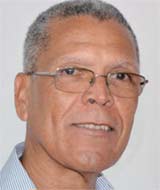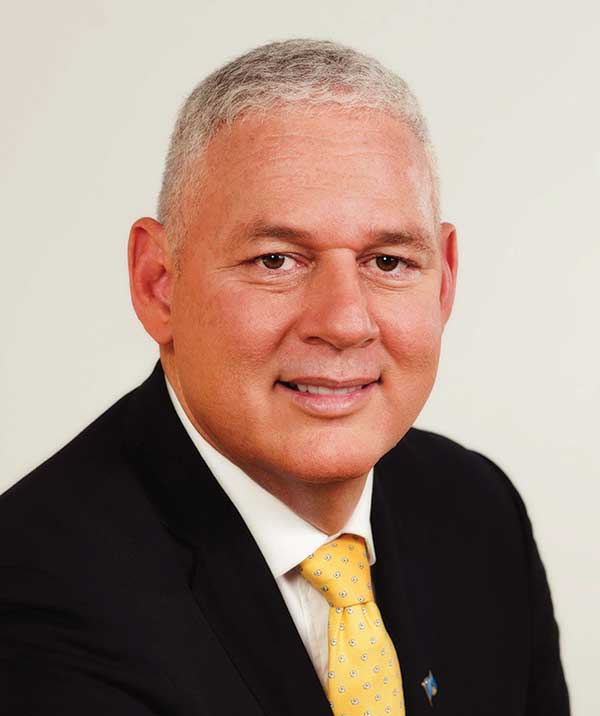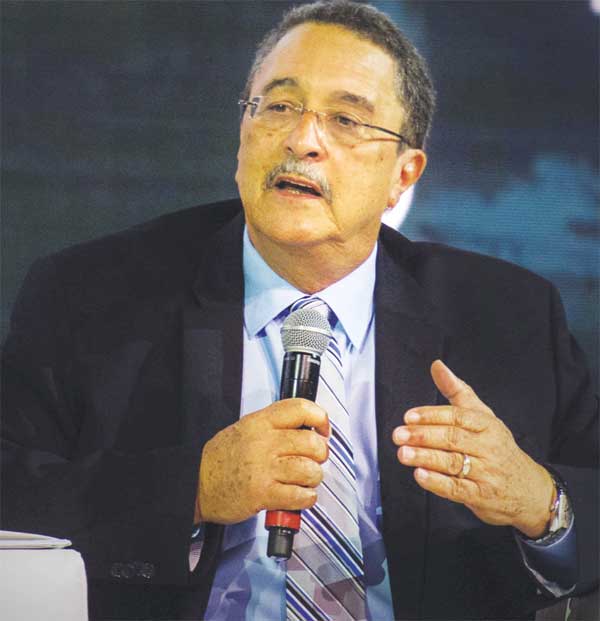
AS we are forced to live through the unfolding tragedy that this Citizenship by Investment Programme has brought on our country, we are now placed in the uncomfortable position of having to examine the contents of leaked documents so as to arrive at some understanding of what is happening to us.
The documents in question are the Framework and Supplemental Agreements for the DSH Vieux Fort project, as well as the letter from former Prime Minister Anthony to Robert Ainsworth. While we have received advice indicating that with Prime Minister Chastenet’s confirmation of the authenticity of those documents comment on them is now acceptable, they should by now have been published by the Government. The Prime Minister read the contents of the Ainsworth letter in the House at its last sitting, but that should not be seen as a substitute for making the document available to the general public.
Having looked at the DSH Framework Agreement last week, we now take a look at the Ainsworth correspondence. Dr. Anthony’s correspondence to Ainsworth is significant, as here again a multi-billion dollar project was being proposed to the government, a project that was to be underpinned by the CIP and the sale of our passports. If the correspondence is to be believed, there is reason to think that while it has been described as “a letter of comfort”, the then government had every intention of proceeding with negotiations with Ainsworth.
In reading the contents of this letter in the House, Prime Minister Chastanet pointed out that the companies that Ainsworth had introduced to the former government had been created within months of Dr. Anthony’s letter to him (Ainsworth). The former government was however so enthuasistic about this Ainsworth proposal that, in addition to the generous tax and duty free concessions offered it was also prepared to offer Ainsworth’s companies the rights to any minerals found on the lands which were to be purchased for the projects, according to that letter.

In the House, Prime Minister Chastanet compared this offer of mineral rights to Ainsworth with the Grynberg issue and the sale of the rights of our seabed to an American investor. Unfortunately though, his statement in the House focused on a defense of his DSH policy as he described the incentives offered to Ainsworth, compared acreages of land involved with both projects, and defended the level of consideration which he had given to the DSH Framework Agreement prior to his signing of it.
When Dr. Anthony’s letter to Ainsworth came to attention, it took less than ten minutes to determine that the companies which Ainsworth were introducing to the government had no track record, and the question must be asked as to what prevented the entire Cabinet of Ministers under Dr. Anthony from making this same discovery prior to February 2016 when details of that “letter of comfort” were agreed.
The Ainsworth and DSH projects have similarities however, as while both provide generous tax concessions and incentives to the investor, both are also dependent on the CIP and the sale of our passports for their establishment. While the issue of the actual acreages of land involved in these projects and whether those lands were to be purchased or leased at nominal rents has become centre stage in the political exchanges, this only serves to cloud the air, as in any realistic project appraisal the value of those DSH leases or purchases would have been considered from the point of view of the profitability of the project, and the residual value of the lands involved would eventually have been established.
In the absence of rigorous analysis of the project, the political arguments being presented to us with respect to the value of the lands are therefore neither here nor there. In the context of our non-scientific approach to the appraisal of the DSH project, it should not have been impossible for some happy medium on the value of the lands to eventually be arrived at. Similarly, consensus could eventually have been arrived at on what was actually to be constructed and where it was to be built. But our politicians would rather have us argue about all manner of irrelevant detail so as to avoid the real issue, which is the sale of our nationality.
What is particularly noticeable about both of these projects, the DSH and the Ainsworth proposal, is that in the absence of any tangible financial benefit to the country, both projects are simply promoted as being the generator of jobs. Today, that is seemingly the catchphrase – “jobs”. 4,000 jobs, 5,000 jobs to be generated by these new mega-projects, and our governments lose any sense of reason. No thought is given to the quality of those proposed jobs or to their sustainability, but with that “provision of jobs” rationale in hand, governments formed by both parties have embraced the citizenship by investment programme and the sale of our passports.
With the recent removal on the limitation of the number of passports that can be sold in any year and the lowering of the cost of our passport, the former SLP administration was vocal in its condemnation of the apparent devaluation of the image of St. Lucia. We have however continuously pointed out that while the price may have changed, the nature of the business in which we are now engaged has not.

And while the Opposition is currently lamenting the new depth to which we have descended, Dr. Anthony’s letter to Ainsworth, preceding all of the now Opposition protestations occasioned by the DSH project and the amendments to the CIP legislation, is instructive on the ultimate nature of this Citizenship by Investment Programme. That letter confirms to Ainsworth “That the proposed developments where appropriate fall within the Tourism Incentives Act, the Special Development Areas Act, the Tourism Stimulus Incentives Act, and the Citizenship by Investment Programme.
Dr. Anthony’s letter to Ainsworth then defines the then government’s intent with respect to the Citizenship by Investment Programme by stating that:
“The Government will facilitate the establishment of the investment as a CIP approved investment under the provisions of the Citizenship by Investment Act (the ‘Act’) to include, but not limited to: the Board and Senior Management of Lifestyle Group plc, its subsidiaries and licensees, DCG Properties Limited, Equator Lands Limited and Equator Lands (Saint Lucia) Limited; any and all joint venture partners connected to the development including hotel operators, retail casino, theatres, nightclubs, private members clubs and marina partners; any and all users of the developments private banking and corporate registration facilities”.
What were the first two statements supposed to mean? Was Dr. Anthony saying in effect that persons connected with the Ainsworth investment were to be accorded status as CIP investment projects? Or was the intention simply to provide everyone connected with this Ainsworth investment a St. Lucia passport? Neither of those options was possible, as while the Citizenship by Investment Act permitted real estate projects to be designated as CIP approved investments, at that time, individuals were only able to acquire citizenship by paying US$200,000 in cash into the National Economic Fund, or by investing US$300,000 in an approved real estate development.
But if the first two statements are troubling, the third part of that item of confirmation given by Dr. Anthony to Ainsworth should send shivers up our spines, as for the first time in his correspondence, Dr. Anthony acknowledges that the Ainsworth development was to include “private banking and corporate registration facilities” and that “any and all users” of those facilities would be somehow accommodated under the Citizenship by Investment Programme.
The recent “Panama Papers” revelations have given us an indication of what is possible even where “private banking and corporate registration facilities” are supposedly well regulated, and we leave it to those involved to explain the intent of Dr. Anthony’s confirmation to Ainsworth with respect to those private banking provisions and the Citizenship by Investment Programme. But in view of what was contained in that letter to Ainsworth, we do not see how it is possible for Dr. Anthony or former members of his Cabinet to now raise objection to the provisions in the current DSH Framework Agreement while maintaining a straight face.
Somehow, in a relatively short space of time, this country has been reduced to debating which side is worse for our country, and the politicians engaged in this scandalous behaviour sit on both sides of the House, pointing fingers at each other while trying to convince us that the issues being discussed are complex and require intellectual consideration. Nothing could be further from the truth.
Next week, we continue to look at the Ainsworth letter, the companies involved, and more of the scandal that this letter represents before returning to DSH.













